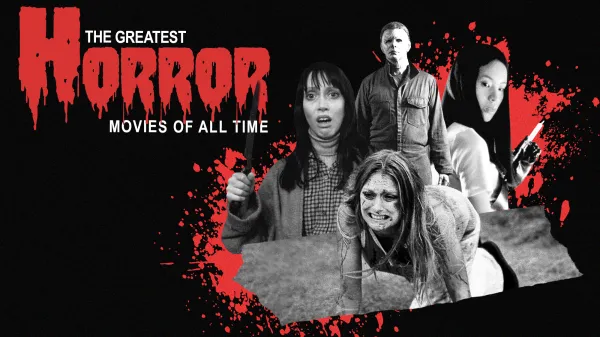The world of horror cinema is rich with unforgettable films that have terrified audiences for generations. Among the greatest horror films of all time, a few titles stand out as iconic, shaping the genre and influencing countless filmmakers. From the classic horror films of the 1930s to the chilling terror of the 1970s and beyond, the genre has continuously evolved, pushing the limits of fear with every decade.
Many classic horror movies remain timeless, continuing to haunt and captivate viewers even today. Films like old horror movies from the golden age of cinema, such as “Nosferatu” and “Frankenstein,” have set the stage for the genre. These old horror films are historical landmarks and the foundation for many of the tropes and conventions we see in modern horror today. Alongside them, classic scary movies such as “Psycho” and “The Exorcist” elevated the art of suspense and terror, ensuring that these old scary movies would remain staples for any horror aficionado.
Examining the timeless horror films, it’s evident that classic horror continues to play a crucial role in the legacy of the genre. From eerie psychological horrors to supernatural scares, these films deliver an authenticity and atmosphere that modern horror often struggles to replicate. Whether it’s the old scary films that concentrated on slow-burn terror or the old scary horror movies that terrified audiences with grotesque imagery, these classics remain as unsettling today as they were when they were first released.
For those who seek a more comprehensive list, the top horror films of all time provide a broad range of terrifying experiences. Some films, such as “The Shining” and “Nightmare on Elm Street,” have cemented their place in horror history, often appearing on lists of the greatest horror movies of all time. These films continue to define the genre, influencing new generations of filmmakers and horror fans.
The best classic horror movies provide a rich source of terror, suspense, and atmosphere for those seeking to explore the world of classic horror. Whether revisiting excellent classic scary movies or exploring the best horror movies of all time, these films are essential viewing for anyone seeking the true roots of fear in cinema.
The Greatest Horror Movies of All Time
Scream (1996)
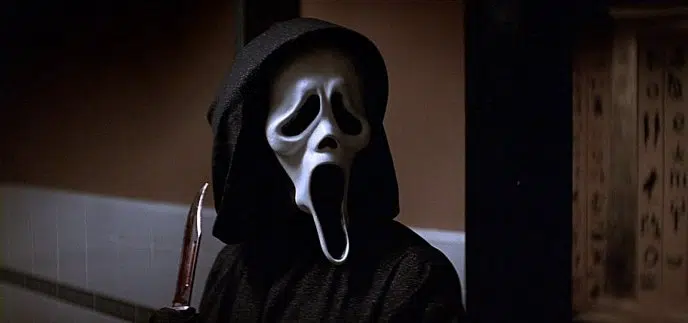
Directed by Wes Craven and written by Kevin Williamson, is a horror film that revitalized the slasher genre. It broke the mold with its meta/self-parody approach, where the characters are aware of the rules and clichés of horror movies yet still fall victim to them. The film cleverly blends whodunit mystery with horror, featuring a group of high school characters who are haunted by a killer in a ghost-faced mask. The opening scene, featuring Drew Barrymore is one of the most iconic horror moments in horror, instantly drawing the audience into a world of tension, fear, and suspense.
The killer’s twisted use of trivia to torment the victims adds a layer of fun while building the scare factor. The mystery deepens as the story progresses, and the plot twists maintain the audience’s suspense. Craven’s ability to mix suspenseful moments with chilling scenes makes Scream unforgettable, leaving a lasting impact on horror cinema. The film’s genre twist, with its blend of thrills and terror, made it a genre-defining classic horror movie that changed the greatest horror movies of all time forever.
Halloween (1978)
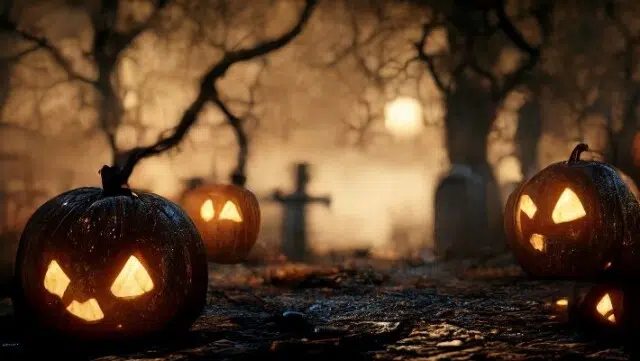
The iconic horror moments in old horror movies are often etched into our minds forever, and Halloween stands tall among them. Directed by John Carpenter, it became the template for countless other films in the genre. Many, like the infamous Friday the 13th, inspired by Halloween, add giallo-level gore but fail to capture its original suspense. Roger Ebert even coined the term “dead teenager movies,” referring to the knockoffs that emerged, but Halloween still stands out due to its simplicity and tension-building story. The mood was set perfectly by Carpenter’s creative choices, from creepy tracking shots to the haunting synthesizer score that amplified the suspense.
The film’s influence was so profound that Kevin Williamson borrowed many of these elements when writing Scream, particularly the moments where a no-talent girl is running up the stairs instead of running out the front door, a mistake that makes viewers anxious. And then there’s Jamie Lee Curtis, who gave us a heroine with a naive yet tough charm as she outsmarts the masked killer, Michael Myers, in a battle for survival. Despite sequels and reboots, nothing compares to the originality of the first film. Halloween has truly earned its place in the horror classics as a true master of suburbia-set terror, and the audience can still relate to its core fears decades later.
If you are looking for other excellent old scary movies, Halloween is one of the best old horror movies to explore! Its blend of psychological tension and slasher elements makes it a staple of old horror movies that will continue to inspire future generations.
The Texas Chain Saw Massacre (1974)
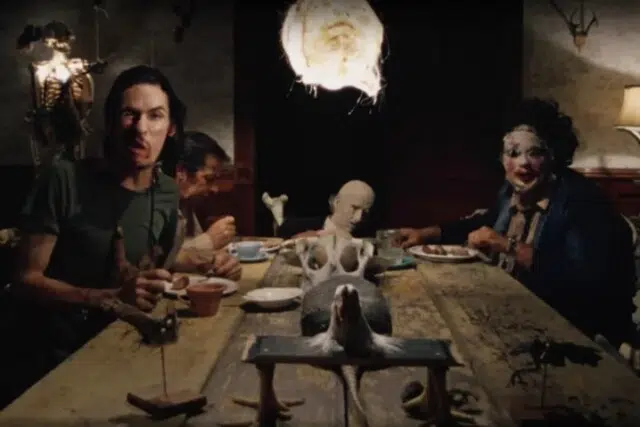
Among the best horror movies ever made, The Texas Chainsaw Massacre stands as a terrifyingly unforgettable masterpiece of iconic horror. Directed by Tobe Hooper, the film emerged in 1974, shocking audiences with its uniquely gnarly approach and grotesque production design. It told the story of a group of teenagers who, while traveling in a blue van through the Texas wilds, stumble into a horrifying encounter with a family of cannibal freaks, led by the iconic villain, Leatherface.
The movie’s primal level of terror is deeply felt through its gritty aesthetic and relentless tension. Hooper’s restrained yet impactful use of gore made every moment of torture and death feel visceral. One cannot forget the indelible image of Leatherface dancing with his saw in the rising sun, a crazed dance of death that sears itself into your memory like a true nightmare. This final scene captures the madness and raw energy of the film, cementing its place among horror classics and old horror movies, leaving audiences shaken long after the credits roll.
Beyond the blood-soaked terror, the movie also reflects a disturbing Vietnam-era subtext, exploring themes like “America eating its young.” The mythology of horror surrounding this film connects it to other horror classics like Psycho and The Exorcist, yet it carves its own space as one of the best old horror movies. Its influence birthed the slasher genre, inspiring masked killers like Michael Myers and Jason Voorhees. With a chainsaw in hand and a mask made of human skin, Leatherface became the archetype of the mentally arrested, mute hulk driven by rage and a need to butcher.
What makes The Texas Chainsaw Massacre more terrifying is its realism. Hooper’s decision to shoot it like a bat-house snuff film amplifies the intensity. The claustrophobic moments—like poor Sally tied to a chair and forced to dine with the insane backwoods clan—make the movie more than just a film; it’s a punishing experience. It’s no wonder people cringed at the disturbing levels of violence, sadistic energy, and unrelenting brutality.
The Shining (1980)
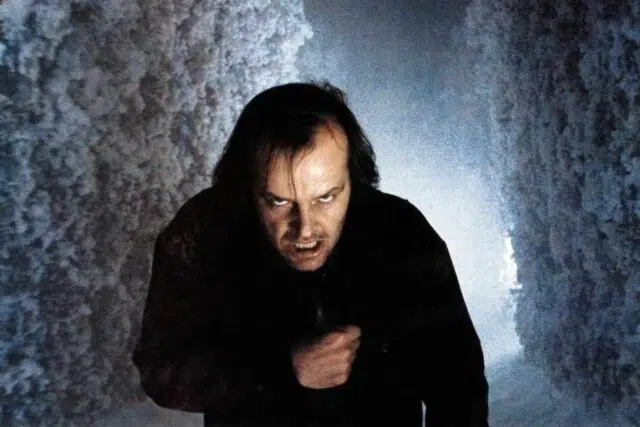
The Shining, Stanley Kubrick’s dense and deranged adaptation of Stephen King’s most popular horror novel, faced mixed reactions upon release. It was panned by critics and even hated by King himself. Despite a lukewarm initial box-office performance, time has proven its brilliance. The story of Jack Torrance, a struggling writer turned winter caretaker of the isolated and haunted Overlook Hotel, unfolds with a unique blend of haunting atmosphere and indescribable terror.
Jack Nicholson, in his iconic role, delivers an intense performance as Jack, who begins to lose his mind, guided by the ghosts lurking in the corridors. His wife Wendy, played by Shelley Duvall, and their psychically attuned son, Danny Lloyd, add depth to the psychological madness. The film showcases a masterclass pace and visual storytelling, featuring unforgettable scenes such as the elevator spilling a river of blood, the spooky twins, and the green bathroom with its deceased guest.
Kubrick’s meticulous direction brought suffocating dread to every frame, turning the Overlook Hotel into the real star of the film. His infamous dedication included shooting the “Here’s Johnny!” scene over three days, breaking 60 doors, and requiring 127 takes of another shot, earning a place in the Guinness Book of Records. While Kubrick was unfairly nominated for a Worst Director award at the inaugural Razzies, hindsight reveals the film as a shimmering study of madness. With its stylistic elements, modern pop culture references like The Simpsons’ Treehouse of Horror, and its ability to inspire repeat viewings and obsessive analysis, The Shining is undoubtedly one of the best horror movies ever made.
Alien (1979)
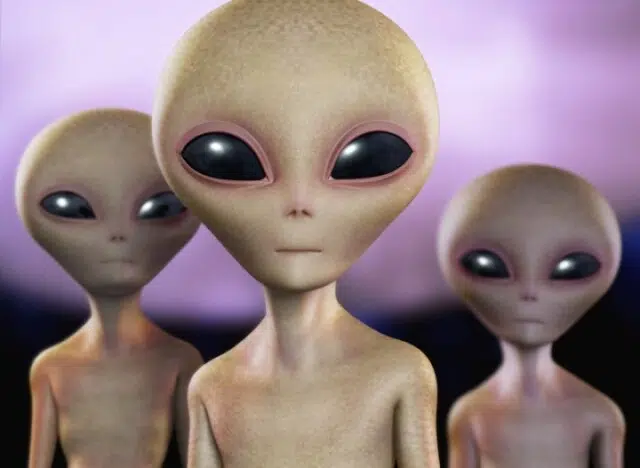
Alien, a film by Ridley Scott, is a unique blend of science fiction and horror, departing from the more family-friendly Star Wars and Star Trek franchises. Set in the future, aboard the mining vessel Nostromo, a small cast is trapped with a terrifying creature, a bloodthirsty alien lifeform. The crew becomes unwitting hosts, and one by one, they fall to this ruthless being. Only Sigourney Weaver’s character, Ripley, survives the alien onslaught, though not without facing overwhelming terror. The film, shaped by H.R. Giger’s nightmarish designs, is full of twisted tubes, cold hallways, and pervasive darkness, making the sterile environment of space feel claustrophobic and threatening.
This movie, which once started as a low-budget B movie, became an unprecedented sci-fi experiment thanks to its meticulous direction and less is more approach. Unlike many sequels and modern directors who opted for Aliens and Predators, Ridley Scott kept the claustrophobic terror intense, emphasizing isolation and fear in the vast, cold depths of space. Ripley quickly became one of the greatest characters in cinema, and this film’s iconic moments, such as the chest burster and face hugger coma, still stand as terrifying scenes for movie fans and audiences today.
Suspiria (1977)
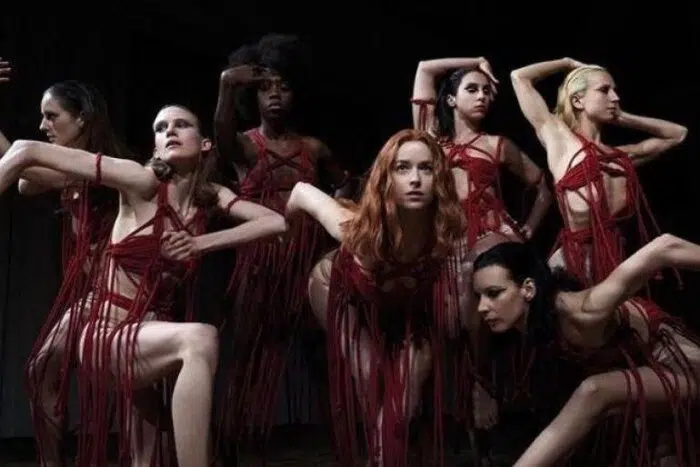
Few films have captured the imagination of iconic horror like Suspiria. Directed by the legendary Dario Argento, this supernatural shocker is a blend of style and terror that has become a horror classic in the genre. The story follows an American ballerina, Jessica Harper, who travels to Germany to study at a prestigious dance academy. However, she soon discovers that the academy is a front for a coven of witches brewing deadly mischief.
The plot is full of gruesome killings, including a double murder and impalement by stained glass, all set against a backdrop of garish color design and a haunting score by Goblin. This film is not just about the terror on screen, but the way it leaves you with nightmares that linger long after the credits roll.
Argento’s work in Suspiria is a prime example of a Giallo film at its most intense, mixing bloody violence, extreme violence, and a vibrant palette to create an unforgettable atmosphere. The dark supernatural elements are amplified by camera acrobatics and a threadbare plot that only adds to the psychotic Italian horror movie experience. The sets, adorned with Satan-gone-Liberace decor, create a world that is simultaneously lurid and innovative.
Even in its Video Nasties era, Suspiria managed to push boundaries and leave its mark on old horror movies, influencing not just fans but directors like Luca Guadagnino, who made a remake with a Thom Yorke soundtrack and Tilda Swinton in multi-rolling roles. For anyone who loves witch demons, obsession, and sexual aberration, this film is one of the best old horror movies.
Night of the Living Dead (1968)
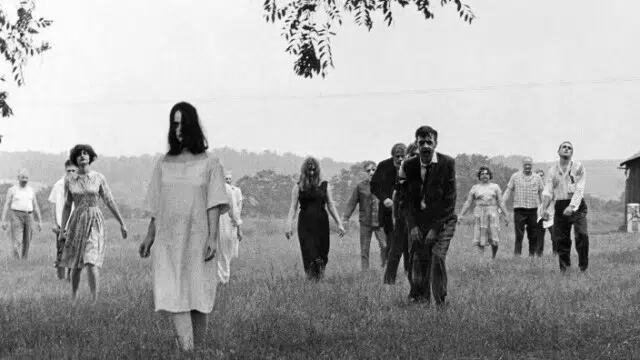
George A. Romero revolutionized the horror genre in 1968 with his groundbreaking film, Night of the Living Dead. Romero’s vision took the concept of zombification, which had previously been confined to creepy voodoo tales and Lovecraftian lore, and turned it into a genre-defining classic. The film introduced the concept of the zombie apocalypse, where dead bodies inexplicably come back to life, walking the Earth in search of human flesh. Romero’s creation tapped into homegrown fear, a reflection of the anxieties of his time.
The horror was not only in the flesh-eating remains of the undead but also in the societal breakdown that led to this apocalyptic scenario. The film’s shocking violence, including the now-infamous line, “They’re coming to get you, Barbara,” left audiences in sheer terror. The film’s violence was so unexpected that it surprised audiences and redefined what horror could be. But Romero did not just create a horror movie—he also infused it with social commentary, particularly around racism, civil unrest, and media, creating a narrative with layers of meaning that still resonate today.
The low-budget, black-and-white shocker marked a turning point in horror cinema, setting the stage for what would become the zombie apocalypse subgenre. Despite its low budget, Night of the Living Dead successfully evoked an atmosphere of hopelessness and desecration of the flesh through its grim portrayal of the undead. The film’s portrayal of death, cannibalism, and brainwashing resonated deeply with audiences, tapping into real-world fears of disease and paranoia. As zombies began to flee through cemeteries and attack people, it became clear that Romero was not just telling a scary story but was commenting on human nature and the world’s darker tendencies.
Even though Hitchcock’s 1963’s The Birds explored the terror of not knowing what was coming, Romero’s film took this fear even further, amplifying it with the outbreak of a global contagion and the mass fear it spread. Romero tapped into an enduring fear—the idea that society could collapse at any moment and we’d be left to face the mindless hordes of zombies. This sense of enduring terror still thrives today, with films and shows like The Walking Dead and games like Plants vs. Zombies continuing to build on Romero’s original vision.
Romero’s film also utilized the vulnerable farmhouse setting as the final defense against the escalating undead. As the fellow citizens turned against each other, the film presented a powerful metaphor for the dangers of social disintegration and paranoia. The lead character, Ben, portrayed by Duane Jones, was a pivotal part of the film’s social message as a black actor in the lead role at a time of heightened racial tensions in America. This casting choice added another layer to the narrative, making it clear that the real threat wasn’t just the flesh-eating remains but also the racism and media manipulation fueling fear and division.
Despite the overwhelming odds, Ben’s struggle to survive in the farmhouse made him an unlikely hero, showing that the true terror wasn’t only from the undead but from humanity’s darker instincts. This politically loaded film not only set the stage for future zombie movies but also became a socially cognisant piece of cinema that questioned how fear can manipulate and divide society.
Romero’s zombie apocalypse film became a symbol of hopelessness, and its influence can be seen in the many films and TV shows that followed. Even though later films introduced faster zombies or virus explanations for the undead, nothing will ever quite match the simplicity and terror of Romero’s original. His ability to blend horror with witty, socially cognisant satire made the film stand out, ensuring its place as one of the best horror movies of all time.
Romero’s film wasn’t just a genre-defining classic; it was the birth of an entire subgenre that continues to dominate the horror landscape. Quentin Tarantino’s description of Romero as a “fucking genius” underscores the significance of Night of the Living Dead as not just a film, but also a cultural milestone that profoundly transformed our understanding of horror, violence, and social issues.
Carrie (1976)
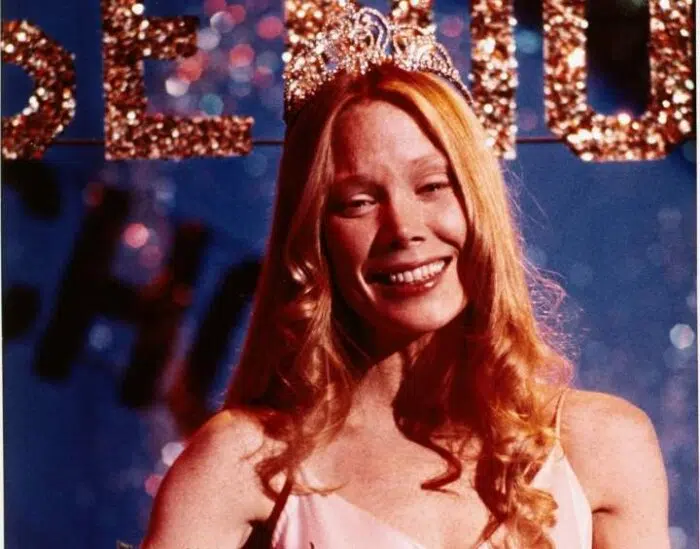
Carrie is one of the most unforgettable classic horror movies, masterfully adapting Stephen King’s novel about a young girl facing the trials of adolescence. Directed by Brian De Palma, the movie blends psychological terror with supernatural telekinetic powers, creating the best classic horror film.
Sissy Spacek’s portrayal of the shy, vulnerable high school wallflower Carrie is both heartbreaking and terrifying, showcasing an incredible emotional range. She plays the role of a girl tormented by her fundamentalist mother and cruel mean girls at school, making her journey all the more sympathetic. The film reaches a freaky finale during the prom, where Carrie, pushed to her limits, unleashes her telekinetic vengeance, turning what was meant to be a moment of romance into a bloodbath.
The intensity of the prom massacre is unmatched, as the film expertly captures the emotional sympathy and terror of Carrie’s vengeance. It’s a stunning combination of horror tropes, including psychological horror and supernatural elements, all wrapped up in a romantic horror narrative.
With scenes like the climactic sequence involving flying knives and the famous line “They’re all going to laugh at you,” Carrie delivers both suspense and shock. It also touches on teenage struggle with its themes of bullying, alienation, and the extremes of revenge. The film’s iconic blood and prom scenes remain twisted endings in horror, cementing Carrie as an eternal horror legend and one of the old horror movies that still resonates as one of the best classic horror films.
An American Werewolf in London (1981)
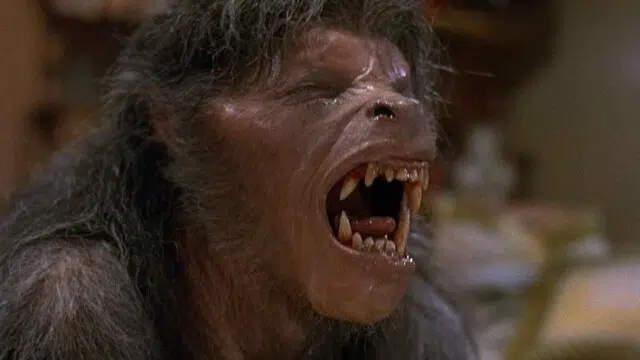
The legendary horror-comedy, An American Werewolf in London, masterfully blends elements of terror and dark humor. Directed by John Landis, the movie is not just about a man turning into a werewolf but also a moving story that cleverly mixes humor with terror. The film follows two backpackers, David and Jack, who are attacked by a vicious wolf in the English countryside.
This attack marks the beginning of David’s transformation into a lycanthrope, a werewolf cursed by a painful transformation process. The film’s special effects work and makeup are iconic, especially during the transformation scene, which remains one of the most grotesque, painful, and unforgettable in cinema. The werewolf myth comes to life in a magical, graphic way that still holds up, even 40 years later.
The relationship between David and the nurse played by Jenny Agutter adds depth to the story, showing that beneath the supernatural terror is a tragic love story. As David’s curse intensifies, his emotional pain is as visible as his grotesque appearance. The film’s affectionate take on werewolf movies and folklore is a heartfelt homage to the bygone scares of classic horror films, yet it modernizes the werewolf genre with unsettling imagery and disturbing nightmare sequences.
David Naughton’s performance is memorable, showing the torment of a man trapped in a cursed form as his suffering and transformation unfold on screen shockingly and terrifyingly. The Werewolf Curse is more than just a monster story—it’s about a man’s battle with his tragic, emotional fate, making this movie a classic of the genre blend of horror and comedy.
Let the Right One In (2008)
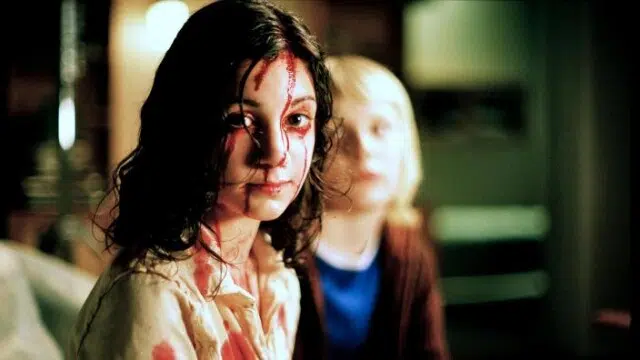
Let the Right One In is a Swedish film that brings an unusual twist to the vampire movie genre. Released internationally, it tells the love story between a 12-year-old boy, Oskar, and a centuries-old vampire, Eli, who looks like a 12-year-old girl but is anything but ordinary. Their relationship is filled with tenderness, but it also has a tragic edge, as Eli’s true nature reveals her to be a bloodthirsty creature.
The film explores themes of loneliness, anxiety, and violent brutality while diving deep into the emotional struggles of its two lead characters. Oskar, a bullied adolescent boy, finds solace in Eli, who becomes both his protector and a nocturnal neighbor. The connection between them is filled with bittersweet moments, as they are drawn together by their loneliness and a need for salvation from their less-than-ideal situations.
The film is not just a coming-of-age story but a dark Scandi horror fest that offers a mix of satisfying horror and romance. Its atmospheric tension is balanced with the thrilling volatility of Eli’s secret, making the movie both creepy and deeply emotional. Tomas Alfredson, the director, crafts a carefully composed narrative where frigid drama meets shocking twists.
The closing moments of the film, where Oskar and Eli head off into an uncertain future, are a controversial pick for many viewers, leaving the audience to decide whether their relationship is one of friends or something darker, like master and slave. The lights on scenes remind us of the vampire myth, but with a refreshing and modern take, and the film remains a stunning, effective portrayal of both horror and love.
Nosferatu (1922)
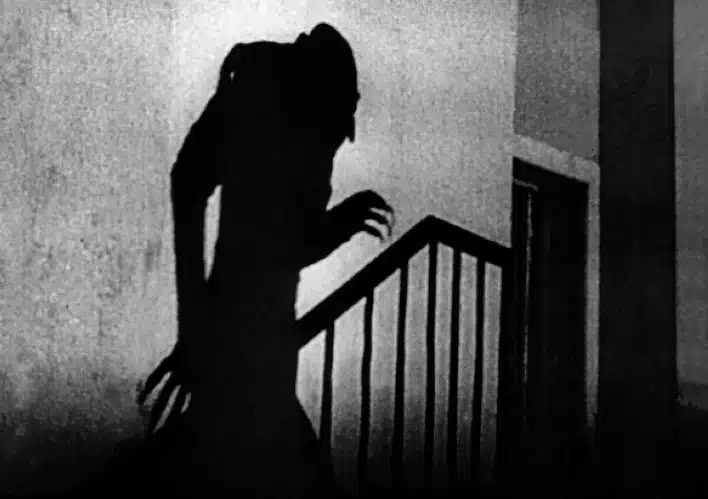
Nosferatu stands as one of the most influential vampire movies in cinematic history. Directed by F.W. Murnau, it is often seen as a shameless rip-off of Bram Stoker’s Dracula. However, despite the legal battles over the rights, Nosferatu became a unique and iconic film that set the tone for the horror genre for decades. The film introduced Count Orlok, a rat-like creature whose sad and tormented nature sets him apart from the usual undead monsters. Unlike the more sensual vampires that followed, Orlok is a grotesque figure with thick shadows and an eerie performance by Max Schreck. The use of body language and exaggerated expressions to communicate fear and horror was revolutionary for its time.
The film’s deliriously creepy atmosphere is built using an expressionistic lighting style and a focus on the imposing shadow of Orlok, which still feels terrifying today. Max Schreck’s bizarre and hypnotic performance as the Count created an unforgettable figure in horror. The famous silhouette of Orlok’s long bony fingers curling like talons is still oft-imitated and remains one of the most memorable moments in cinematic history. This terrifying figure was brought to life without sound, relying on silhouettes and grotesque imagery to convey the horror. Even now, Nosferatu holds a special place as a quintessential incarnation of the Transylvanian vampire, and its influence can be seen in films spanning over 100 years.
Murnau’s Nosferatu has become more than just a film; it has shaped the language of the horror genre. The pestilence and shadows surrounding Count Orlok serve as a template for the way modern horror films create fear. His appearance, from the bulging eyes to the hunched shoulders, still inspires filmmakers today. The character’s ability to intimidate with just a silhouette made Nosferatu a remarkable achievement, and its technical innovations continue to influence horror filmmaking. As the film entered the public domain, it allowed others to exploit the character and keep Nosferatu’s legacy alive.
Even though Nosferatu was not Dracula and had to change the names and elements of Bram Stoker’s Dracula, it became its cinematic legend. The film’s impact is undeniable, and Roger Ebert once remarked, “To watch Nosferatu is to see the vampire movie before it had seen itself.” The image of Count Orlok, a figure of isolation, continues to resonate, and as time passes, the film remains a creepy moment in cinema that still makes audiences look over their shoulder.
Poltergeist (1982)
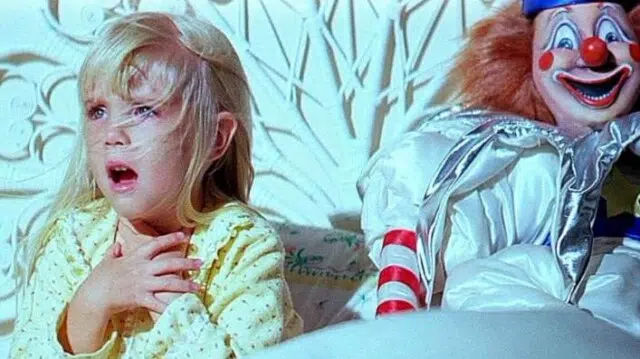
The movie Poltergeist introduces terror to an unexpected location: a suburban track home. Rather than the typical haunted mansions or ancient castles, Tobe Hooper and Steven Spielberg transform the ghost story into a generic house, transforming it into a deadly trap inhabited by violent, supernatural creatures and Native American ghosts seeking solace. The Freeling clan, including the famous Carol Ann, experience vortexes, floating objects, and interdimensional child-napping. The once peaceful home becomes a place of terror, where even frustrated trees seem to come to life, busting through windows and trying to grab the family.
The scene with Carol Ann’s warbled white-noise voice and the terrifying, malicious clown doll is one of the movie’s most devastating wins. It is a refreshingly scary film that leaves viewers cowering in the corner, especially when zombies emerge from the swimming pool. Despite the less-than-warranted sequels, Poltergeist remains a masterwork of horror, breaking free from the confines of traditional haunted settings and introducing a new kind of horror right in the middle of a family home built on an ancient burial ground. The movie’s PG rating might have been surprising at the time, but the terror it evokes is undeniable.
Frankenstein (1935)
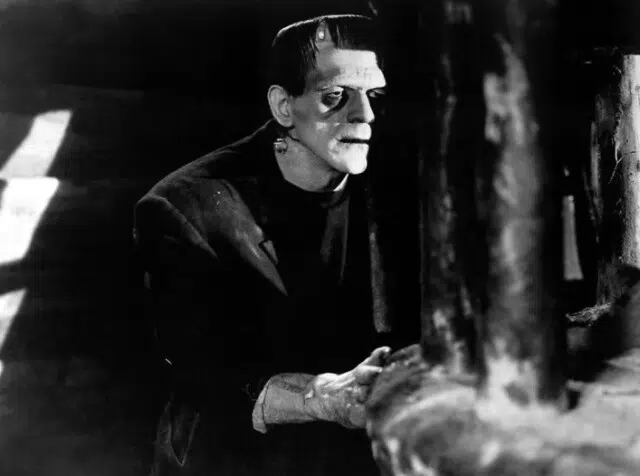
James Whale’s classic film, Bride of Frankenstein, is a key entry in the Universal cycle of monster pictures. It expertly builds on the original, taking the Monster (played by Boris Karloff) and Colin Clive’s Dr. Frankenstein to new depths. In this second turn, Whale adds more complexity to the story and characters, introducing the iconic creation of the Bride of Frankenstein, played by Elsa Lanchester.
Whale’s skillful direction turns the monster’s gift of speech into a means for him to form a friendship with a blind hermit (played by O.P. Heggie), showcasing the human connection that the creature desperately seeks. As the Monster struggles with his pathos, he embarks on a frustrated search for a mate—a quest that gives rise to both humor and horror throughout the film.
The film thrives on its mischievous wit, largely driven by Doctor Pretorius (played by Ernest Thesiger), whose cherishably waspish character provides much-needed levity amidst the tension. His dry remarks and manipulation of Dr. Frankenstein in creating The Bride offer an intriguing counterpoint to the monster’s misery. The creation of the bride, with her shock-haired appearance and the iconic bolt of white in her hair, culminates in an unforgettable scene.
However, the bride’s rejection of the monster, despite their shared creation, brings the tragic story to its finale, where an exploding laboratory on a mountainside adds dramatic flair to the conclusion. The monster’s rejection of his new bride and subsequent spurning of his creator lead to chaos, emphasizing the inherent weakness of human ambition.
While Bride of Frankenstein is undeniably a horror film, Whale also incorporates moments of comedy and unsettling imagery, such as the famous scene where the monster is crucified or the controversial character moments that blur the line between horror and satire. The film is as much a commentary on the horrors of human existence as it is a groundbreaking piece of cinema.
The humor within it makes the pathos of the monster’s predicament even more poignant, further enriching the film’s narrative. As James Whale guides his audience through a horror genre that deals with themes of humanity and connection, the movie has remained a timeless classic for over 80 years, inspiring filmmakers and audiences alike. Despite the monster’s monstrous exterior, Whale shows that love, friendship, and even the quest for acceptance are universal desires that speak to all.
Through its eternal challenges—the monster’s struggle to be loved, the mischievous wit of characters like Doctor Pretorius, and the gift of speech allowing for deeper emotional connections—Bride of Frankenstein is an exploration of what it means to be human. The film is not just a horror movie; it’s an introspective look at loneliness, rejection, and the electric thrill of creation, making it much more than just a monster movie. Over 80 years later, this film is still talked about, loved, and continually analyzed, proving its unmatched quality in the world of classic monster pictures.
The Babadook (1980)
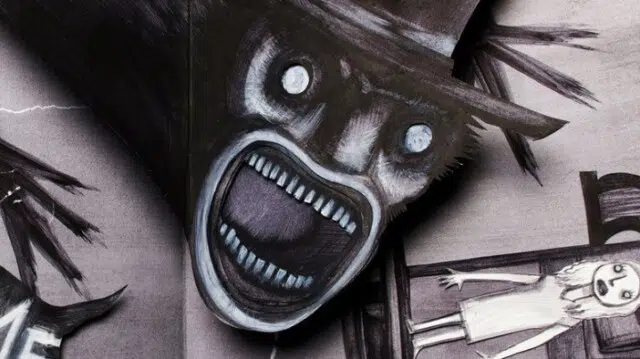
The Babadook isn’t just another monster movie you might expect from a standard trailer. While it sets up an intriguing supernatural film premise, it dives deep into a mother’s struggle, her mentally unraveling state, and her complex relationship with her son. This film doesn’t rely on typical horror tropes. Instead, the film cleverly employs the Babadook’s spanner to disrupt the seemingly normal family dynamic, thereby creating a tension that seems poised to unravel at any moment. The creepy storybook serves as a guide, but its rules are chilling: you can’t get rid of the Babadook.
The fascinating aspect of this psychological thriller lies in its ability to challenge audience expectations. Despite appearing to lead the fight against the monster, the resourceful kid ultimately finds his arsenal of tricks futile in the face of such overwhelming fear. Instead, the solution comes not through eradication but through an unexpected twist that challenges both the characters and viewers alike. It’s a metaphor for survival in grief and isolation, where even the dark and sinister elements of the story feel unresolved yet deeply impactful.
The film’s horror-fantasy nature, led by Jennifer Kent’s direction and Essie Davis’s outstanding performance as a single mom, brings the story to life in a way that is both terrifying and comforting. The difficult child and the parent’s dilemma play out as the monster is not only external but tied to internal struggles, creating an emotional rollercoaster of dread, tension, and psychological drama. It’s a thriller that challenges both the characters’ psyche and the audience’s own sense of reality.
Get Out (2017)
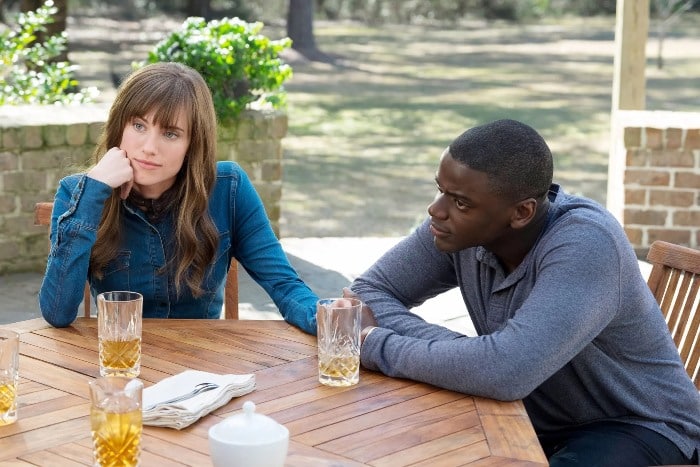
Get Out is one of the most impactful horror films of recent years. Directed by Jordan Peele, it blends satire with societal horrors, offering a sharp and direct commentary on race and identity. The story follows Chris, a Black American man who meets his white, middle-class girlfriend’s parents for a nightmarish weekend. Peele expertly amplifies the Black experience in the contemporary US, creating a freak show that highlights the dangers of casual racism. With standout performances from Daniel Kaluuya, Bradley Whitford, Catherine Keener, and Alison Williams, the film is both entertaining and deeply unsettling.
The film’s concept plays on the contrast between the veneer of decent manners and the evil that lurks beneath, making it a brilliant exploration of societal and racial tensions. As the plot unfolds, Peele shows how bigotry endures in white Americans, even as society advances. The film’s success was undeniable, with Oscar recognition for Best Screenplay and nominations for Best Picture, Director, and Leading Actor. Get Out not only captured audiences with its bold approach but also reshaped the horror genre, combining metaphor and emotional depth to create an unforgettable cinematic experience.
It Follows (2014)
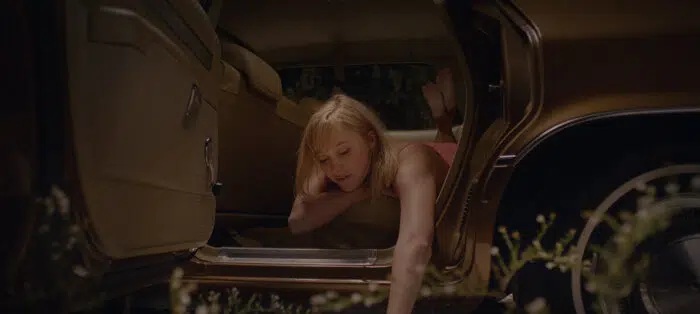
It Follows is considered one of the best horror films of 2014, thanks to its brilliant and unique concept. The film presents a mysterious entity that is sexually transmitted, and it manifests as a variety of shuffling, injured strangers, or even people familiar to the victims. The entity pursues its target relentlessly, creating a sense of fear, terror, and dread that heightens the tension throughout the film. The twist is unlike any typical slasher movie, where promiscuous teens usually meet a tragic end. Here, the curse can be passed on by simply having sex, like a chain letter, which adds a dark and unsettling dimension to the plot.
The film is full of unpredictability as it plays on the psychological and supernatural elements of horror, making the audience question what is real. It takes the familiar tropes of horror movies and twists them in a way that leaves the viewer on edge. With its eerie, disturbing atmosphere and haunting visuals, It Follows stands out as a truly creepy and disturbing film. It’s a captivating journey into the unknown, where the pursuit of the entity becomes a constant source of suspense and damage, making it a must-watch for any fan of the genre.
Candyman (1992)
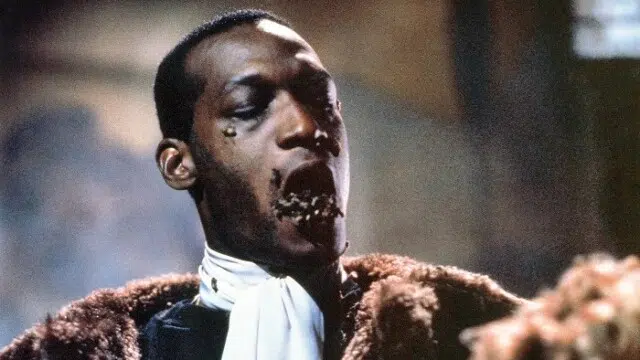
Candyman is a supernatural thriller inspired by Clive Barker’s short story, “The Forbidden.” The movie centers around Tony Todd playing the title character, a boogeyman and the son of a slave from the 1800s. His tragic fate—having his hand cut off, being swarmed by bees and stung to death, and eventually having his body burned—adds to the chilling backstory of this urban legend. The plot follows Helen, a grad student portrayed by Virginia Madsen, as she investigates the Candyman legend in Chicago’s Cabrini-Green projects, where the tale has spread as a way to explain inequality and the difficulties of life. The film dives deep into the community, exploring social issues such as racial inequality and historical injustice.
Directed by Bernard Rose, Candyman is not just a horror film for fans seeking gore; it’s a story that brings social commentary into the genre. It presents mystery, terror, and suspense, with a macabre ending that leaves a lasting impact. While the film plays with folklore and the power of urban legends, it also tackles tragedy, death, and the fear that comes with them. The chilling atmosphere, combined with the supernatural horror elements and the deep narrative, makes Candyman stand out in its genre, offering more than just scares but an exploration of deeper social and historical themes that still resonate today.
The Conjuring (2013)
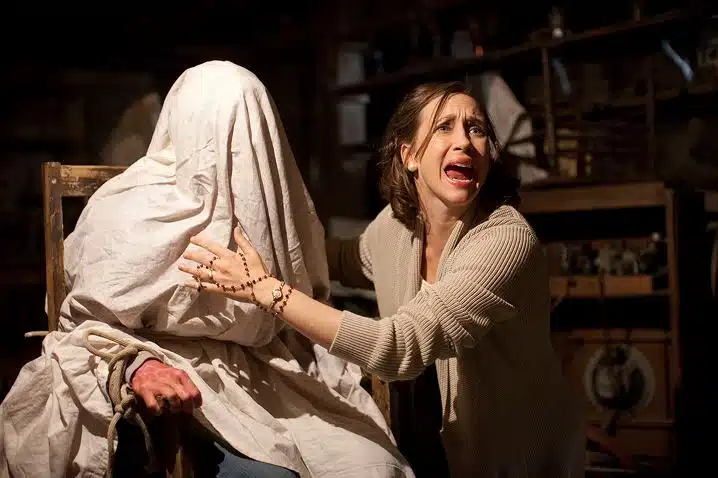
The Conjuring Universe (or TCU) began with James Wan’s chilling masterpiece, weaving a character-driven story around real-life paranormal investigators Ed and Lorraine Warren, portrayed by Patrick Wilson and Vera Farmiga. This film stands out for its ability to balance its horror and suspense with deeply emotional moments. The plot follows a family whose peaceful farmhouse home is torn apart by a demonic possession. The evil entity challenges their love, faith, and trust in God, creating a deeply cinematic, emotionally charged narrative.
Wan’s storytelling is both masterful and terrifying. The film builds tension and offers a sense of relief as it reaches its climax, making it a perfect blend of supernatural horror, fear, and terror. The dark atmosphere, complete with a haunting and devilish presence, makes it unforgettable for horror fans. Whether it’s the characters, the case files, or the investigation, everything works together seamlessly to immerse viewers into a world of supernatural and real-life fear.
Hereditary (2018)
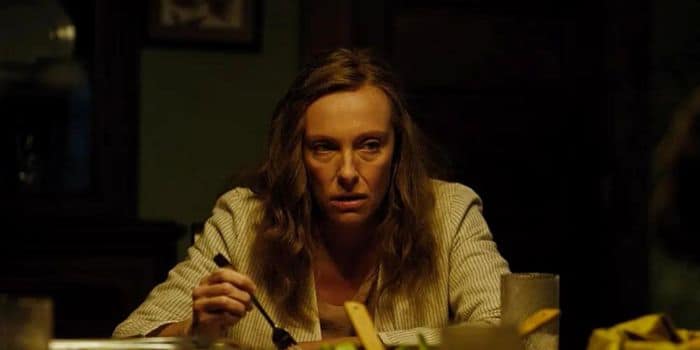
Ari Aster brings a deeply freaky and sinister edge to the supernatural thriller “Hereditary.” At its heart, it is about a family being torn apart not just by ghosts but by an overwhelming sense of guilt and devastation. The unsettling events—séances, moving objects, decapitated bodies, crawling ants, and the oddity of Charlie (played by Milly Shapiro), who sees eerie apparitions—create a meditative menace that lingers throughout the film. Toni Collette’s portrayal of an anguished mother, reminiscent of Liv Ullmann, carries raw emotion, while Peter (played by Alex Wolff), the morose pothead high schooler, embodies the weight of a mystery that shifts the narrative into a vision of the afterlife invading the present.
Aster’s ability to create traditional frights like jumpy moments and unsettling imagery is amplified by the gut-wrenching emotional horror of the heart-crushing rug-pull moments. The climactic sequence delivers a stunning and shattering experience, akin to a journey through a mirror. From its spine-tingling body horror to the creepiness of a nightmare that won’t end, the film resonates with a divisive final reel that makes it an unforgettable debut feature. Aster’s dark atmosphere and mastery over squirmy tension ensure that “Hereditary” leaves its mark as a deeply emotional and terrifying cinematic experience.
Psycho (1960)
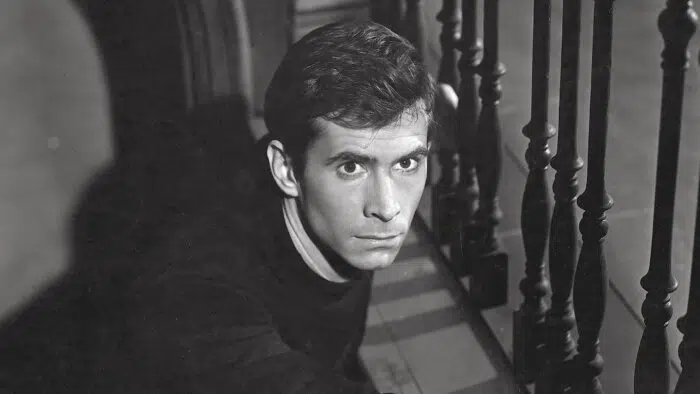
In 1960, Alfred Hitchcock revolutionized the horror movie industry with the release of Psycho. Despite having a limited budget and a limited cast, Hitchcock created one of the greatest thrillers ever made. The film’s suspense and tension are almost unbearable, with every moment designed to keep audiences on the edge of their seats. At its heart is the twisted story of Norman Bates, a man with a crazy mother who runs the isolated Bates Motel, where a young woman named Marion Crane becomes a victim of a brutal knife-wielding killer. This shocking moment, along with the shower slaying, became one of the most famous scenes in Hollywood history.
As the film unfolds, the secret of the Bates family is revealed, making Psycho an iconic film in the horror genre. Its classic status has only grown over the years, inspiring sequels, a shot-for-shot remake in 1998, and even a TV show. The musical key by Bernard Herrmann and the unforgettable shower scene are still talked about as some of the most nerve-wracking moments in cinematic horror. Psycho is more than just a film; it’s a testament to Hitchcock’s skill as a director, combining primal terror with a masterful sense of storytelling.
Hellraiser (1987)
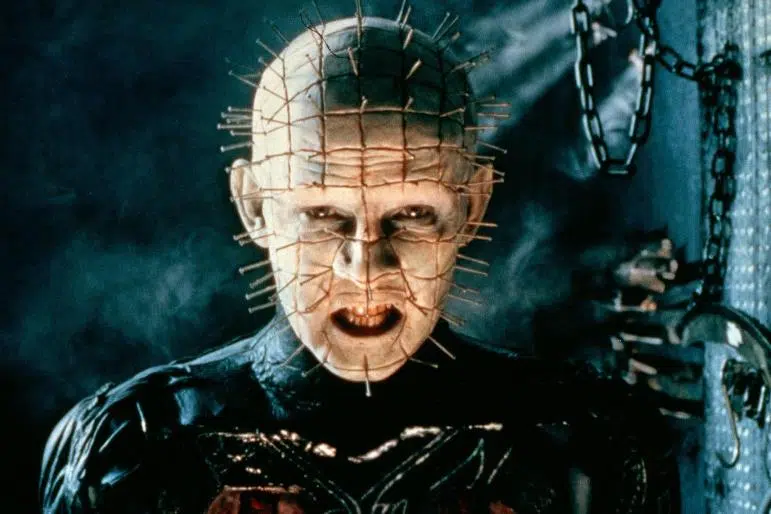
When Hellraiser was released in the late ’80s, it stood out in the horror landscape. Directed by Clive Barker, it marked his debut as a filmmaker, offering an unexpected twist on the genre. The film was not just another slasher; it blended an adult domestic drama with supernatural underpinnings, violence, and gore while giving viewers fascinating glimpses into a larger universe. The rules of this universe were almost fully formed from the start, setting it apart from other films of its time. The first film focuses on a love triangle and a Faustian pact, a complex blend of Marlowe and Chekhov, with visual panache, while the sequel would expand on these ideas.
The S&M demon Cenobites, especially Doug Bradley’s Pinhead, are the film’s most famous elements, yet they are featured briefly. The real triumph of Hellraiser is the character of Uncle Frank, whose story becomes the core of the horror. This unique combination of supernatural themes and psychological drama made Hellraiser a standout film in the horror genre. It redefined horror in a way that was bold and innovative for its time.
Jaws (1975)
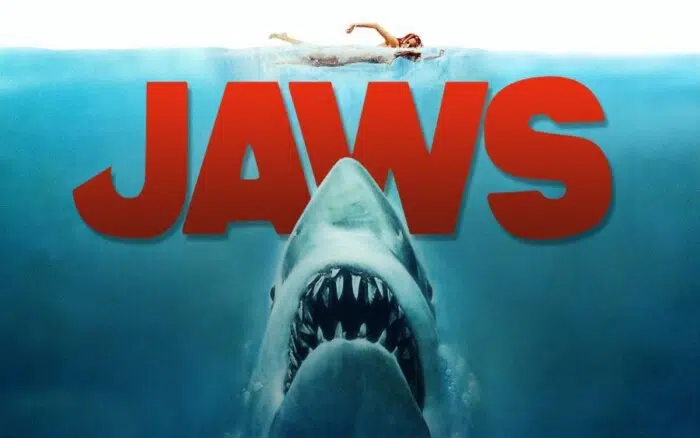
Jaws, directed by Steven Spielberg, is one of the scariest movies ever made. This blockbuster is more than a shark movie; it’s a gripping character piece set on Amity Island, where residents are preyed upon by a monstrous shark with teeth the size of shot glasses. The career-defining performance by Roy Scheider as Chief Brody, a small-town sheriff with a fear of water, adds human depth to this story. Alongside Richard Dreyfuss’ Hooper and Robert Shaw’s Quint, Brody embarks on a thrilling hunt aboard the Orca, confronting primal fears and the ever-present danger of the murder fish.
The film’s suspense is heightened by John Williams’ iconic score, which builds a pulse-accelerating rhythm that makes hearts race. The opening scene, a chilling midnight swim, engages our imagination by revealing the shark’s point of view and subtly hinting at the lurking menace beneath the surface. The use of the giant prop shark, depicted as a nearly supernatural power, exaggerates the threat yet feels eerily real. Its impact extended beyond the screen, altering audiences’ behavior toward water, whether in lakes, pools, or beaches. With its thrilling, terrifying, and unforgettable scenes, Jaws became a mega-successful film that defined the summer blockbuster and earned a legacy of movie magic through repeat viewings on VHS, DVD, and streaming.
28 Days Later (2002)
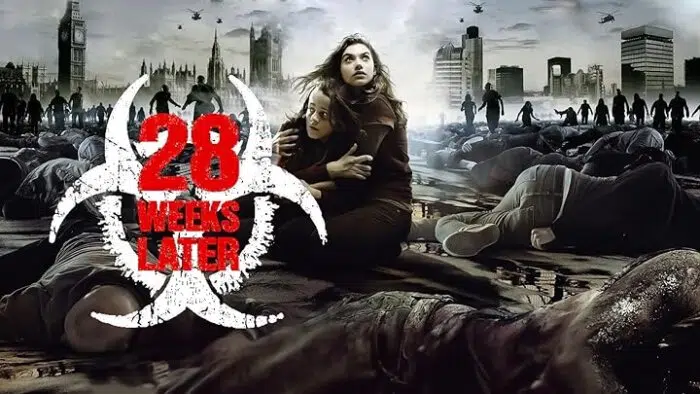
The film 28 Days Later forever transformed the zombie genre. Directed by Danny Boyle and written by Alex Garland, it revived the genre when it was practically dead, thanks to its swift zombies or infected. Unlike the typical slow zombies in films like those by George Romero, these creatures sprint with adrenaline, making them much scarier and more intense.
The movie’s visceral horror is not just about the infected but also about humanity in a world facing the threat of an unfamiliar disease—the rage virus. As Cillian Murphy wakes up from a coma, the postapocalyptic setting of London becomes the backdrop for a terrifying new reality. The digital cinematography, shot with tiny Mini DV cameras, adds a sense of immediacy and severity, making you feel like you’re right there on the front lines of a world falling apart.
The film serves as an effective commentary on modern life, highlighting the rapid disintegration of things and the shift in human behavior during times of crisis. The outstanding cast, including Naomie Harris, and the smart script bring sincerity to the chaos that makes the film resonate long after you’ve seen it. The zombie movie genre may have seemed tired, but 28 Days Later made it bigger than ever with its fresh take and thrilling pace. The lights on scene, where Cillian Murphy realizes the scope of the situation, is just one example of how 28 Days Later continues to illuminate what it would mean for Earth to be taken over by a rage virus.
The Blair Witch Project (1999)
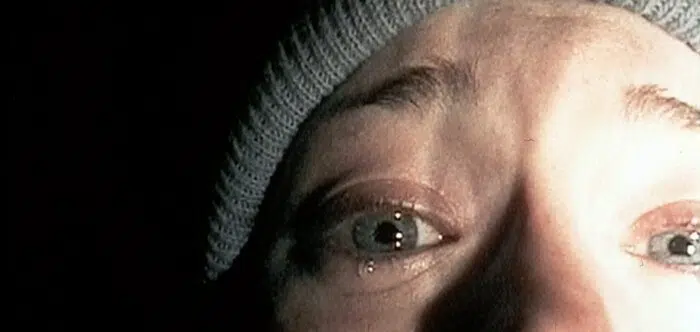
When The Blair Witch Project hit theaters in 1999, it sparked the birth of a new kind of horror movie. With its faux-documentary style and shaky camera technique, the film made audiences question whether what they were seeing was real or just fiction. This effective approach to suspense and frustration had never been seen before in Hollywood, and it created a widespread trend that inspired many future films.
The movie’s shaky camera and the screaming sounds of the characters lost in the woods created a chilling atmosphere that kept viewers on edge, especially during the night scenes. It wasn’t the jump scares or killing of characters that made it so memorable—it was the growing suspense and fear of the unknown, the terror of what could be lurking behind the next tree.
This scarefest became a cultural moment, spreading through the Internet and leaving fans scrambling for clues about the Blair Witch. The movie’s success, despite being made on a nano-budget, was a true triumph.
It provided an unforgettable experience, demonstrating that a simple documentary crew exploring the Black Hills could elicit the kind of chills that slasher movies could only imagine. The film’s legacy continues to influence horror genre films today, with imitators like Paranormal Activity trying and often failing to replicate its disorientating chills and sense of dread.
Evil Dead II: (1987)
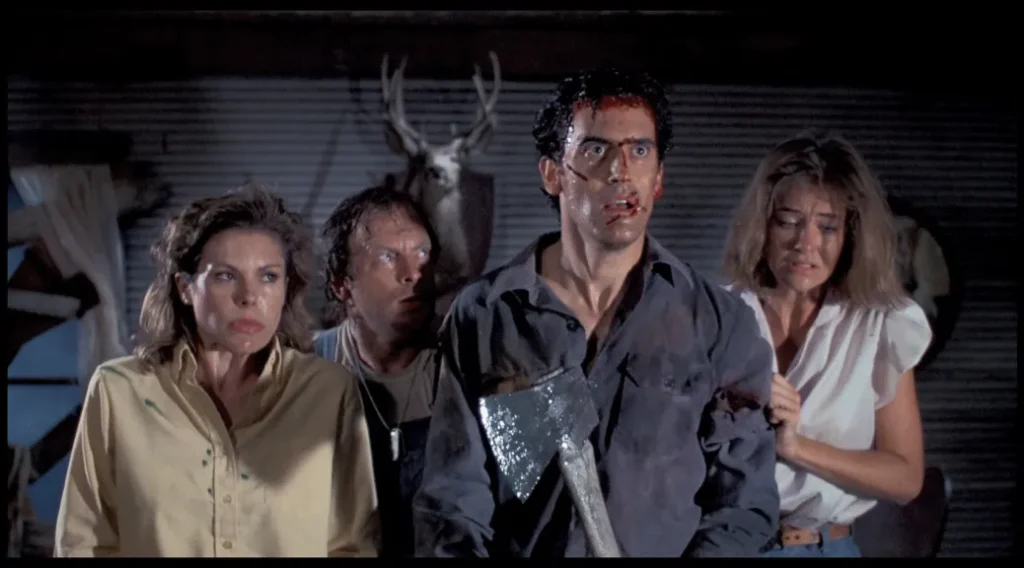
Evil Dead II is more than just a sequel; it’s a remix that takes the horror genre to new heights. Director Sam Raimi and Bruce Campbell return to the woods for another round of splatter and gore. This time, they raise the stakes by going to an even more ridiculous degree, pushing gross-outs and grotesqueries to their limits. Fans of the original film will recognize the ancient text and the Deadite transformations, but Raimi adds his signature groovy touch, blending comedy and horror in a way that only he can. The iconic scene where an eyeball flies into a person’s mouth remains a standout moment in this splatterfest.
The movie’s grotesque humor is paired with moments of genuine spooks and suspense, creating a memorable experience. Ash faces off against possessed guests with a chainsaw in hand, cementing his role as a cult hero. The chaos in the cabin is relentless, as Raimi perfectly balances horror and comedy with stylish antics. The transformation of the film into a midnight movie phenomenon is largely due to its over-the-top action, from hyper-kinetic camera gymnastics to the fortuitously timed rise of the sun that saves Ash from becoming a Deadite.
This cult classic has influenced countless films and is considered a genre-defining entry in the horror genre. With a budget that could be considered shoestring, Raimi made a classic that continues to thrill audiences. The legacy of Evil Dead II lives on through its memorable characters, its perfect blend of horror and comedy, and its suspenseful, terrifying atmosphere that keeps you on the edge of your seat from beginning to end.
The Fly (1986)
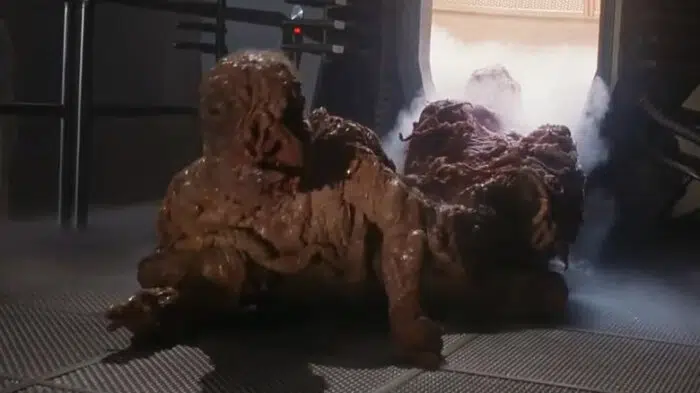
In David Cronenberg’s intense, R-rated remake of The Fly, Jeff Goldblum stars as Seth Brundle, a scientist who invents telepods meant to change the world. However, an accident occurs when a fly gets trapped in one of the machines, turning Brundle into a man-fly monster. As he transforms, he becomes a horrifying hybrid, with his humanity fading away. The special effects in this body-horror film are extraordinary, creating disgusting and gore-filled scenes that leave viewers on edge. The tragic story unfolds, showing Brundle’s downfall as he battles with his new insect body. His lover, Geena Davis, becomes an empathetic foil to his descent into madness, witnessing his transformation with both horror and sadness.
The movie’s creature effects and dark twists create a horror opera that is both disturbing and oddly romantic. With a powerful score by Howard Shore, The Fly is a blend of gross-out moments and tragic storytelling. Brundle’s ambition and arrogance lead to his downfall, as he learns the painful lesson that nature will always find a way to remind man not to play God. One of the most unforgettable scenes is Brundlefly’s moment inspecting his medicine cabinet, which now holds pieces of his former self—mason-jarred junk and all. It’s a film that not only shocks but leaves a lasting impact on anyone who watches, thanks to Goldblum’s amazing performance and the transformational journey of the character.


